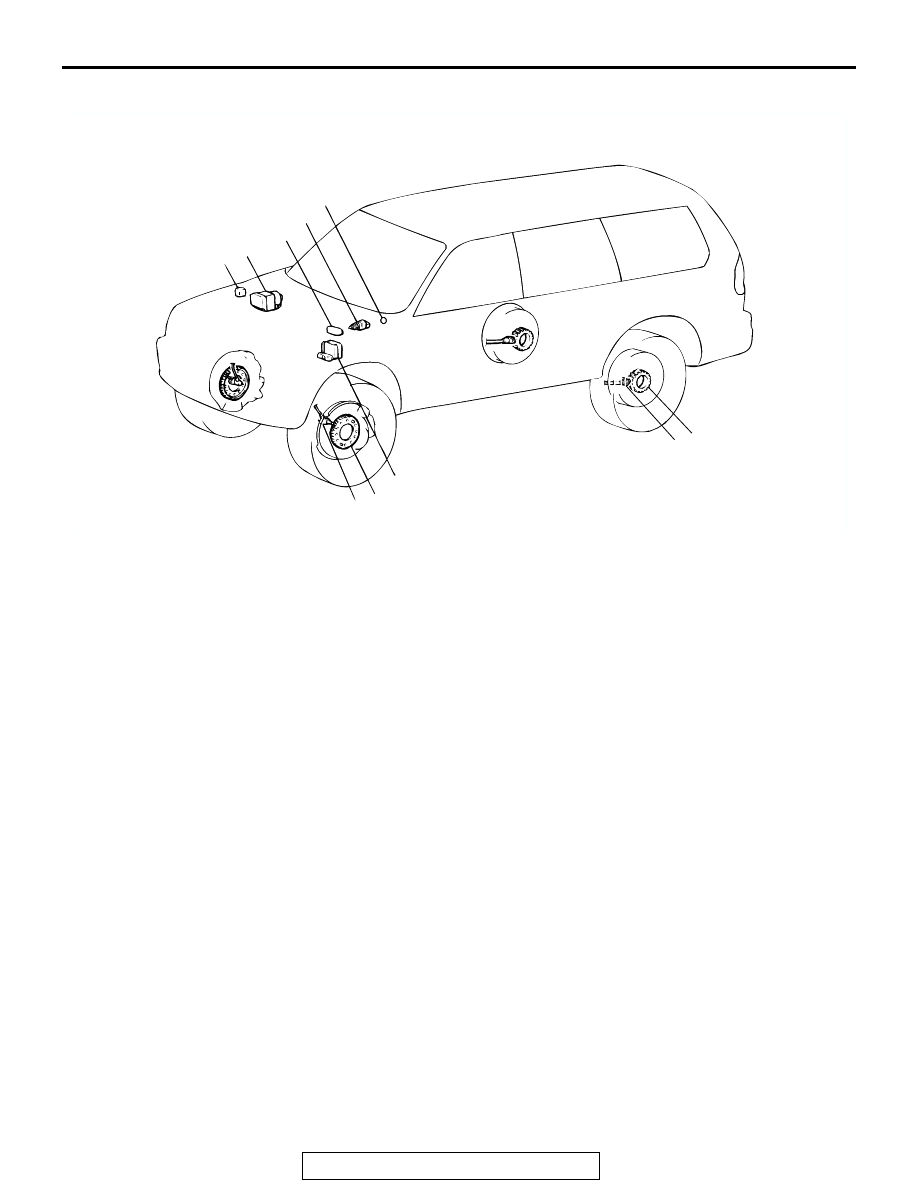Mitsubishi Montero Sport (2004+). Manual - part 799

GENERAL DESCRIPTION
TSB Revision
ANTI-LOCK BRAKING SYSTEM (ABS) <4WD>
35C-3
CONSTRUCTION DIAGRAM
AC309307 AB
6 5
7
5
6
1
2
3
4
8
1.
ABS WARNING LIGHT RELAY
2.
HYDRAULIC UNIT (INTEGRATED
WITH ABS-ECU)
3.
DATA LINK CONNECTOR
4.
STOPLIGHT SWITCH
5.
ABS ROTOR
6.
WHEEL SPEED SENSOR
7.
ABS WARNING LIGHT
8.
G-SENSOR